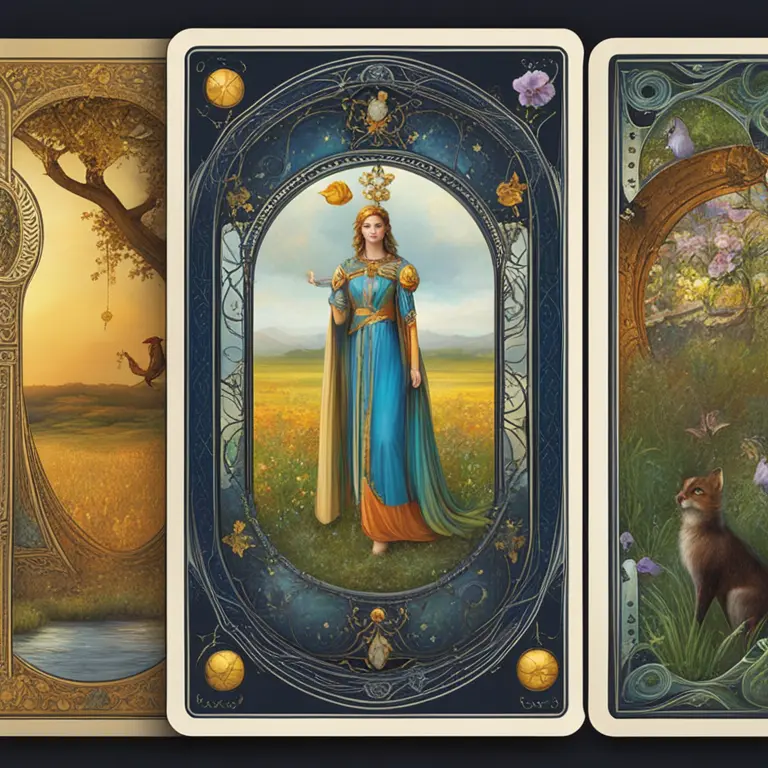
Introduction to Tarot's Potency
Tarot has fascinated individuals around the globe for centuries with its enigmatic allure and perceived power to unveil deeper truths. The intricacies of a Tarot deck, comprised of 78 cards each holding its unique symbolism, invite seekers to ponder life's myriad possibilities. It's not just the ink and paper—advocates believe Tarot works through synchronicity, a meaningful alignment of events, which Carl Jung might attribute to our collective unconscious. The cards are said to reflect our innermost thoughts, fears, aspirations, and potential paths forward, sparking introspection and self-awareness among those who consult them.

Symbolism and Archetypes
Tarot's efficacy stems, in part, from its rich symbolism and the archetypal images that transcend cultural and temporal boundaries. Each card captures an aspect of the human experience, from the joyous celebration depicted in The Three of Cups to The Hermit's quest for inner wisdom. This universal language of symbols speaks directly to the subconscious, allowing Tarot readers to tap into the common threads of human experience. When we recognize these archetypal characters and situations in our lives, we unlock personal narratives that may otherwise go untold.

Mirrors to Our Inner Workings
A Tarot reading is akin to holding up a mirror to our inner workings, not predicting a predetermined future but illuminating potential outcomes based on our current trajectories. With the right intention, a spread of cards can reflect what we already know deep down, encouraging us to take ownership of our choices and destiny. The psychological aspect of the practice suggests it’s not necessarily about foresight, but insight—guiding individuals to understand their circumstances with greater clarity and encouraging personal growth.

An Evocative Experience
Beyond the cards themselves lies the evocative experience of the reading, which can change perceptions and evoke powerful emotions that lead to transformation. The ambiance of a reading—the dim lighting, the hushed tones, the array of images splayed across the table—sets the stage for a journey into the psyche. Tarot readings create a space where normal constraints on our perspective are lifted, opening us up to new ways of thinking. The process itself, therefore, becomes therapeutic, working because it breaks the daily routine and invites wonder and contemplation.

Guidance for the Future
As we look forward to the cosmic shifts of 2024, Tarot’s relevance persists. It adapts, taking on the evolving symbolism of our collective consciousness. People turn to Tarot during uncertain times, and with the upcoming conjunctions and retrogrades shaping our astrological forecasts, many will be seeking the direction that Tarot promises to provide. While the stars may compel, the cards offer a more personal touch, suggesting specific actions and considerations tailored to an individual’s query.
Why Skeptics May Be Missing Out
While skepticism around Tarot is understandable, considering its mystical connotations, dismissing it outright may close one off to the benefits it can offer. Whether one views Tarot readings as a spiritual tool or as a form of psychological exploration, its utility can be profound. A reading can act as a catalyst for introspection and dialogue with oneself, offering a pause from the relentless pace of modern life to reconnect with inner wisdom—be it through divination or self-reflection.
Published: 2/8/2024
Modified: 2/8/2024
More predictions
Come back here soon to learn more about yourself and your future


Do Tarot Cards Foresee Future Events?
Explore the captivating world of tarot and its capacity to reveal insights about the future in this comprehensive article.


The Tarot Card Associating with Aquarius
Discover which tarot card embodies the traits of Aquarius, tying in celestial intuition with the wisdom of the tarot.


The Tarot Card Symbolizing Leo
Discover the tarot card that embodies the fiery essence of the zodiac sign Leo, and how it reflects the lion's attributes in readings.